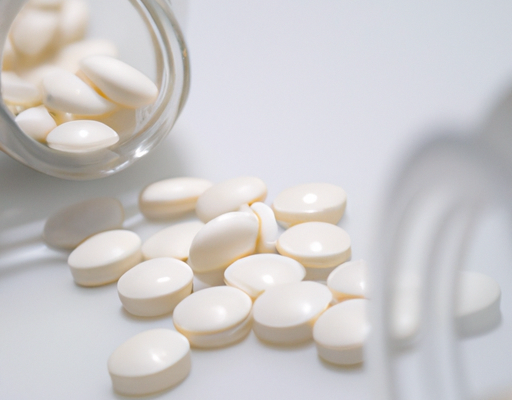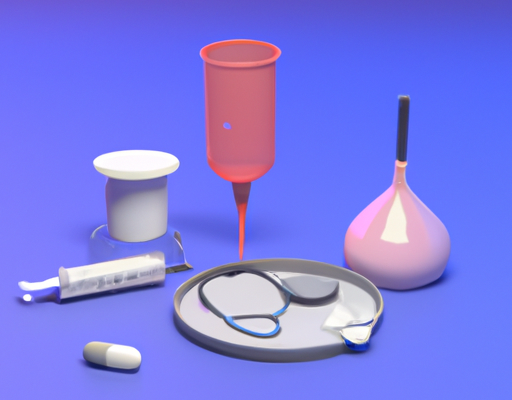Definition of biopsy
A biopsy is a medical procedure used to collect and analyze a small sample of tissue from the body. It is commonly performed in order to investigate and diagnose diseases or to monitor the progress of a particular treatment. In a biopsy, a doctor will remove a tissue sample from an area of the body, usually with a needle. The sample is then examined in a laboratory setting for signs of disease, inflammation, or other abnormalities. While the procedure is generally considered relatively safe, a biopsy-related rash may occur in some cases.
Types of biopsies
A biopsy is a medical procedure where a small sample of tissue is removed from a body area such as the skin, lungs, or digestive tract, and examined under a microscope. Depending on the type of biopsy, different tools may be used to collect the sample, such as a needle or punch biopsy. Common types of biopsies include fine needle aspiration, core needle biopsy, incisional biopsy, and excisional biopsy. Each type of biopsy has its own unique set of risks and benefits, and the doctor will perform the one best suited to the individual’s situation. In some cases, a rash or other skin reaction may occur in the area following a biopsy, and it is important to speak to a doctor about any concerns.
Causes of biopsy-related rash
A biopsy-related rash is an adverse skin reaction that occurs after undergoing a biopsy procedure. Although not a common occurrence, it is important to be aware of the potential risk of developing a rash. The cause of a biopsy-related rash is not completely understood, but there are a few factors that are believed to play a role. The most common cause is an allergic reaction to the antiseptic used to clean the skin at the site of the biopsy. Another potential cause is an infection that develops at the biopsy site due to bacteria on the instrument used for the procedure. It is also possible that the trauma from the biopsy itself can cause irritation to the skin and result in a rash. Luckily, biopsy-related rashes are usually mild and resolve quickly with treatment.
Symptoms of biopsy-related rash
Biopsy-related rash is a skin condition that can occur after a biopsy procedure. It can cause redness, itchiness, and swelling of the skin around the biopsy site. In some cases, the rash can spread over a larger area of skin, and may also be accompanied by hives and blistering. Other possible symptoms include pain, tenderness, and burning sensations at the site of the biopsy. While it is a rare complication of biopsy, it is important to be aware of the signs and symptoms so that you can get timely treatment if you develop a biopsy-related rash. It is also important to keep your doctor informed if you experience any of the aforementioned symptoms, so that they can provide appropriate treatment.
Diagnosis of biopsy-related rash
A biopsy-related rash is a skin condition that can indicate a serious underlying medical problem. A biopsy-related rash can appear after a biopsy procedure or in response to certain medications. Diagnosing the cause of a biopsy-related rash can be a challenge, and may require careful evaluation by a medical professional. Here are the steps to diagnosing a biopsy-related rash:
- A complete medical and family history should be taken.
- A physical examination should be performed to assess the type and extent of the rash.
- Laboratory tests may be necessary to identify any underlying medical condition.
- The patient’s response to treatment should be monitored.
- Further biopsy tests may be required to confirm the diagnosis.
If the cause of the biopsy-related rash is unclear, further investigations may be necessary to diagnose the underlying medical problem. Once the cause is identified, treatment can begin. Early diagnosis and treatment of a biopsy-related rash can help reduce the risk of serious complications.
Treatment of biopsy-related rash
When a biopsy-related rash appears, it is important to have medical attention and treatment, as soon as possible. Treatment options for a biopsy-related rash depend on the cause and severity of the symptoms. Generally, however, the doctor may prescribe an antibiotic ointment, an anti-inflammatory cream, or a corticosteroid cream. Other treatment options may include an oral steroid, topical immunomodulators, phototoxicity drugs, or cranial electrical stimulation. Other more serious treatment options may include laser treatments, surgery, or other form of intense radiation. If the symptoms are severe enough, your doctor may refer you to a dermatologist. No matter what type of treatment is decided, it is important to take special care of the affected area and closely follow the directions of your doctor.
Prevention of biopsy-related rash
Preventing a biopsy-related rash is possible with a few simple steps. Before the procedure, discuss any allergies or sensitivities to medications or anesthetics with your healthcare provider. Your healthcare provider may also recommend taking an antihistamine an hour before the biopsy. After the biopsy, your doctor may suggest that you apply a cold compress to the site to reduce pain, swelling, and itching. Additionally, to help reduce the risk of infection, keep the area clean and dry, and avoid strenuous activity or touching the area—unless instructed by your healthcare provider. If the area becomes swollen, red, or painful, or if you develop a fever, contact your healthcare provider.
When to see a doctor
Any rash has the potential to be serious and depending on their appearance, location and any other accompanying symptoms, they may need to be evaluated by a medical professional. If the rash is painful, is spreading rapidly, is accompanied by a fever or other significant symptoms, or has been persistent for more than a couple of days, seeing a doctor should be the next step. It is also recommended to seek medical attention if the rash appears after a biopsy, as it can be a sign of an infection or other complication from the biopsy procedure. Early diagnosis and treatment by a doctor can help prevent any further complications.





No Comments